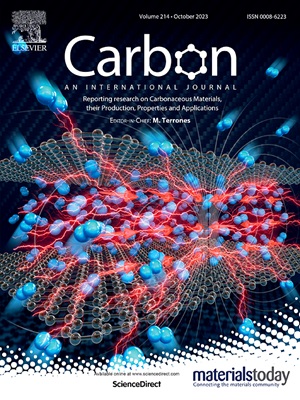Proximity coupling of graphene to a 2D silicene magnet
IF 10.5
2区 材料科学
Q1 CHEMISTRY, PHYSICAL
引用次数: 0
Abstract
2D magnets attract significant attention due to the variety and tunability of their properties, prospects in ultra-compact spintronics. Their range of applications can be expanded significantly by coupling with nonmagnetic 2D layers to produce functional heterostructures. In these endeavors, graphene plays the central role – the emerging magnetic proximity effects drive applications in spin-based devices. However, development of graphene heterostructures with 2D f-magnets, notable for unconventional magnetic structures and properties, lags behind. Here, we report synthesis of the trilayer heterostructure GdSi2/Gr/GdSi2 with magnetism stemming from half-filled 4f-shells of Gd ions. Remarkably, the graphene interlayer results in doubling the magnetic transition temperature of the silicene-based 2D magnet GdSi2. Caused by proximity to the 2D magnet, the electron transport in graphene demonstrates negative magnetoresistance and the anomalous Hall effect, pointing at spin polarization of carriers. Magnetic signals and proximity effects in GdSi2/Gr/GdSi2 are much stronger than those in graphene heterostructures with rare-earth metal superlattices whereas the effective mass of carriers is kept rather low suggesting that the advantageous properties of graphene are preserved. The GdSi2/Gr/GdSi2 system is integrated with the ubiquitous Si semiconductor platform. The developed synthetic approach provides a route to a class of magnetic heterostructures coupled with technological semiconductors.

求助全文
约1分钟内获得全文
求助全文
来源期刊

Carbon
工程技术-材料科学:综合
CiteScore
20.80
自引率
7.30%
发文量
0
审稿时长
23 days
期刊介绍:
The journal Carbon is an international multidisciplinary forum for communicating scientific advances in the field of carbon materials. It reports new findings related to the formation, structure, properties, behaviors, and technological applications of carbons. Carbons are a broad class of ordered or disordered solid phases composed primarily of elemental carbon, including but not limited to carbon black, carbon fibers and filaments, carbon nanotubes, diamond and diamond-like carbon, fullerenes, glassy carbon, graphite, graphene, graphene-oxide, porous carbons, pyrolytic carbon, and other sp2 and non-sp2 hybridized carbon systems. Carbon is the companion title to the open access journal Carbon Trends. Relevant application areas for carbon materials include biology and medicine, catalysis, electronic, optoelectronic, spintronic, high-frequency, and photonic devices, energy storage and conversion systems, environmental applications and water treatment, smart materials and systems, and structural and thermal applications.
 求助内容:
求助内容: 应助结果提醒方式:
应助结果提醒方式:


